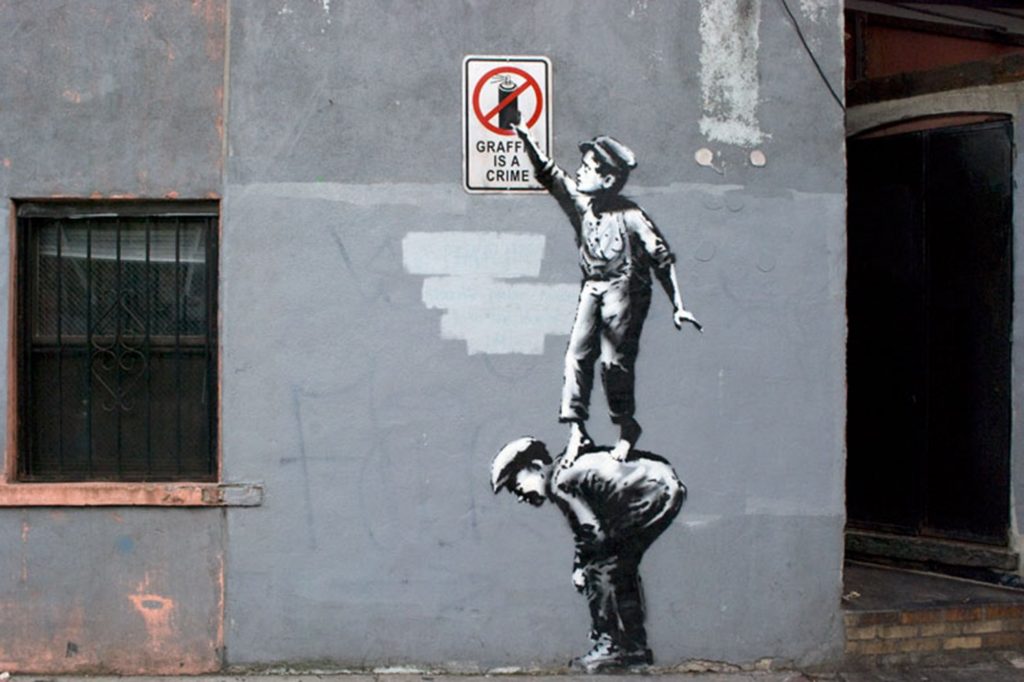Walking through big cities like New York City and Los Angeles, it is easy to marvel at the gigantic skyscrapers and flashing lights, blending with large crowds of tourists. However, the kiss camera on the Times Square billboard does not hold the inner wonders of the city. In small alleys, bits and pieces of graffiti fill the walls with wondrous colors and inspirational messages, while in children’s parks, abstract figures add to a more lively environment. This is where the city’s true beauty hides.
Art is never just on the surface. Around the world, street art has blossomed in cities, climbing on walls, flowing through roads, and creating a lively environment that allows people to appreciate the world around them. Cities like Berlin, Germany, Sao Paulo, Brazil, and Melbourne, Australia contain streets with color-filled walls, each portraying a different message. In Manarola, Italy, each home is painted a brilliant color, so when one glances upon this quaint, cliff side village of the Italian Riviera, they are instantly dazzled by the sheer beauty.
What makes street art so different from the art many see in galleries and museums is not merely because its location on the street. A gallery artist’s work expands the viewer’s area of thought and imagination just like any abstract design, but it does not emphasize its surroundings like street art does. In contrast to art in private collections, public art has more purpose. Artists are able to use their minds and resources to create something wonderful in their environment. They can express themselves through their art and share that with the world. As the well-known and anonymous British street artist Banksy said, “Should graffiti be judged on the same level as modern art? Of course not: It’s way more important than that.” These days, with recent global catastrophes, many find it hard to stay positive and have the time to appreciate the good things in life.
Street art is a very general term for the kinds of art expressed in public areas. Each artist has his or her own style and each piece delineates a unique theme to its viewers. Street art includes a large range of graffiti, carvings, sculptures, and structures in an open, easily accessible space. Some artists may choose to illustrate meaningful messages about their world view, while others may use their works to amuse their audiences. The meanings in each piece of street art is infinite.
The tragic attacks in Paris that happened on November 13, have inspired uplifting global support. In response to the terrorist attack that left 129 dead, street artists in France and around world used the hashtag, SprayForParis, or the Latin phrase, “Fluctuat Nec Mergitur”, on various websites to show their support and love for the victims. There have been more than 50,000 people who posted all over social media using the tag. These artists created splendid pieces, but what makes this particular situation so motivational, was the sheer number of people gathering to support the cause and their ability to express it to the public through their art.
However, street art has its own downside. It cannot always be expressed so freely and there are some who use this art for harmful means. Street art is actually illegal, but that is because there is a line between vandalizing private property and participating in a city plan. Unfortunately, it is easy to blur the lines of just signing a signature on a building and street art. Many projects that are presented and approved by the city, work to improve the city’s environment; however, illegal graffiti used to scrawl a gang sign does little for others. In addition, there have been cases where negative messages were shown in graffiti to attack religious, social, and minority groups, but these should not be thought of as street art. These insults are examples of the blurred line between vandalism and art.
Exposure to inspirational art, can help people strengthen their world views. In Ridgewood High School, many of our hallways are decorated with colors and various student pieces. According to Live Science, studies have shown that the colors in someone’s everyday life affect their behavior. Gray is typically associated with depression and anxiety while yellow is connected with happiness; thus, bright colors tend to lighten people’s spirits. Around the world, art continues to contribute to the beauty of many cities and in our own community of Ridgewood, it also greatly inspires citizens who admire the world in which they live in. So next time you venture outside, pay little closer attention to the art around you.
Janus Kwong
staff writer

